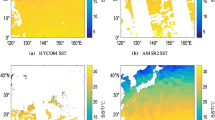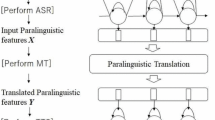Abstract
Due to the gradual improvement of computing power and the development of big data, the error rate of voice recognition systems and voice assistance functions gradually decreases with the gradual application of deep learning. In terms of commercial contracts, it is a legally binding text. This article first analyzes the theory of functional equivalence translation and then analyzes the theory of functional equivalence translation from the perspective of professionalism and accuracy and determines the principles of business contract English vocabulary translation. At the same time, it studies English in terms of vocabulary equivalence. In the process of teaching trade English, some common vocabulary in trade English is easy to be misunderstood. This article analyzes these common translation errors and their main causes and proposes some appropriate solutions. Business English vocabulary translation must follow the principle of pragmatic equivalence, and the translation must be flexible to deal with communication obstacles caused by cultural background, language habits, and other factors, because they are subject to two different language and cultural characteristic rules (English and Chinese). The seasonal autoregressive summed moving average (ARIMA) model is used to simulate the time series of the surface water temperature in the coastal waters, and the structure of the model is determined through the principle of irrelevance and simplicity. On this basis, the optimal ARIMA prediction model is established and the surface water temperature of the coastal waters is monthly. The prediction results are consistent with the monthly change trend of the sea surface temperature, indicating that the model is suitable for predicting the offshore surface temperature.













Similar content being viewed by others
Change history
14 December 2021
This article has been retracted. Please see the Retraction Notice for more detail: https://doi.org/10.1007/s12517-021-09278-3
28 September 2021
An Editorial Expression of Concern to this paper has been published: https://doi.org/10.1007/s12517-021-08470-9
References
Al-Dossary S, Marfurt KJ (2006) 3D volumetric multispectral estimates of reflector curvature and rotation. Geophysics 71(5):P41–P51
Blakely RJ (1995) Potential theory in gravity and magnetic applications. Cambridge University Press 441pp
Blumentritt CH, Marfurt KJ, Sullivan EC (2006) Volume-based curvature computations illuminate fracture orientations — early to mid-Palaeozoic, Central Basin Platform, west Texas. Geophysics 71:159–166
Cevallos C, Kovac P, Lowe S (2013) Application of curvatures to airborne gravity gradient data in oil exploration. Geophysics 78(4):G81–G88
Cooper GRJ, Cowan DR (2009) Terracing potential field data. Geophys Prospect 57:1057–1061
Eales HV (2001) A first introduction to the geology of the Bushveld complex and those aspects of geology that relate to it. Council for Geoscience, Pretoria 84pp
Gonzalez RC, Woods RE (2008) Digital image processing, 3rd edn. Pearson 976pp
Lee MD, Morris M, Leblanc G, Harris J (2013) Curvature analysis to differentiate magnetic sources for geologic mapping. Geophys Prospect 61:572–585
Li X (2015) Curvature of a geometric surface and curvature of gravity and magnetic anomalies. Geophysics 80(1):G15–G26
Miller HG, Singh V (1994) Potential field tilt – a new concept for location of potential field sources. J Appl Geophys 32:213–217
Mitasova H, Jarosalav H (1993) Interpolation by regularized spline with tension: II. Application to terrain modelling and surface geometry analysis. Math Geol 25:657–669
Phillips JD, Hansen RO, Blakely RJ (2007) The use of curvature in potential-field interpretation. Explor Geophys 38:111–119
Roberts A (2001) Curvature attributes and their applications to 3D interpreted horizons. First Break 19(2):85–100
Sandgren P, Snowball I (2001) Application of mineral magnetic techniques to paleolimnology BT - tracking environmental change using lake sediments: physical and geochemical methods. In: Smol JP (ed) Last WM. Springer Netherlands, Dordrecht, pp 217–237
Scofield N, Roggenthen WM (1986) Petrologic evolution of plagioclase-rich cumulates from the Wichita Mountains, Oklahoma: effects upon magnetic remanence properties. Geology 14:908–911. https://doi.org/10.1130/0091-7613(1986)14<908:PEOPCF>2.0.CO;2
Seisuma Z, Kulikova I (2012) Distribution of metal concentrations in sediments of the coastal zone of the Gulf of Riga and open part of the Baltic Sea. Oceanology 52:780–784. https://doi.org/10.1134/S0001437012060112
Sergeev A (2015) The history of geological development of the Curonian Spit in the Holocene and modern lithodynamic processes in the coastal zone (in Russian). A.P. Karpinsky Russian Geological Research Institute
Sergeev AY, Zhamoida VA, Ryabchuk DV, Buynevich IV, Sivkov VV, Dorokhov DV, Bitinas A, Pupienis D (2017) Genesis, distribution and dynamics of lagoon marl extrusions along the Curonian Spit, southeast Baltic Coast. Boreas 46:69–82. https://doi.org/10.1111/bor.12177
Šliaupa S, Hoth P (2011) Geological evolution and resources of the Baltic Sea area from the Precambrian to the Quaternary. Balt Sea Basin - B Ser Cent East Eur Dev Stud:13–51. https://doi.org/10.1007/978-3-642-17220-5_2
Stauskaitė R (1962) Mineralogical composition of sand from the Baltic Sea coastal stretch between Šventoji- Jantarnoe (Palvininkai). Proc Sci Acad Lith Ser B 4:83–105
Stauskaitė R (1966) Lithology and lithodynamic of modern sediments in the coastal zone of south-east the Baltic Sea. Vilnius
Tanner WF (1990) Origin of barrier islands on sandy coasts. Trans Gulf Coast Assoc Geol Soc 40:819–824. https://doi.org/10.1306/20b232cd-170d-11d7-8645000102c1865d
Vetrimurugan E, Shruti VC, Jonathan MP, Roy PD, Kunene NW, Villegas LEC (2017) Metal concentration in the tourist beaches of South Durban: an industrial hub of South Africa. Mar Pollut Bull 117:538–546. https://doi.org/10.1016/j.marpolbul.2017.02.036
Author information
Authors and Affiliations
Corresponding author
Ethics declarations
Conflict of interest
The authors declare that they have no competing interests.
Additional information
Responsible Editor: Hoshang Kolivand
This article is part of the Topical Collection on Smart agriculture and geo-informatics
This article has been retracted. Please see the retraction notice for more detail: https://doi.org/10.1007/s12517-021-09278-3
About this article
Cite this article
Qin, C., Zhu, J. RETRACTED ARTICLE: Voice-assisted translation of English vocabulary for offshore surface water temperature and trade. Arab J Geosci 14, 1389 (2021). https://doi.org/10.1007/s12517-021-07740-w
Received:
Accepted:
Published:
DOI: https://doi.org/10.1007/s12517-021-07740-w




